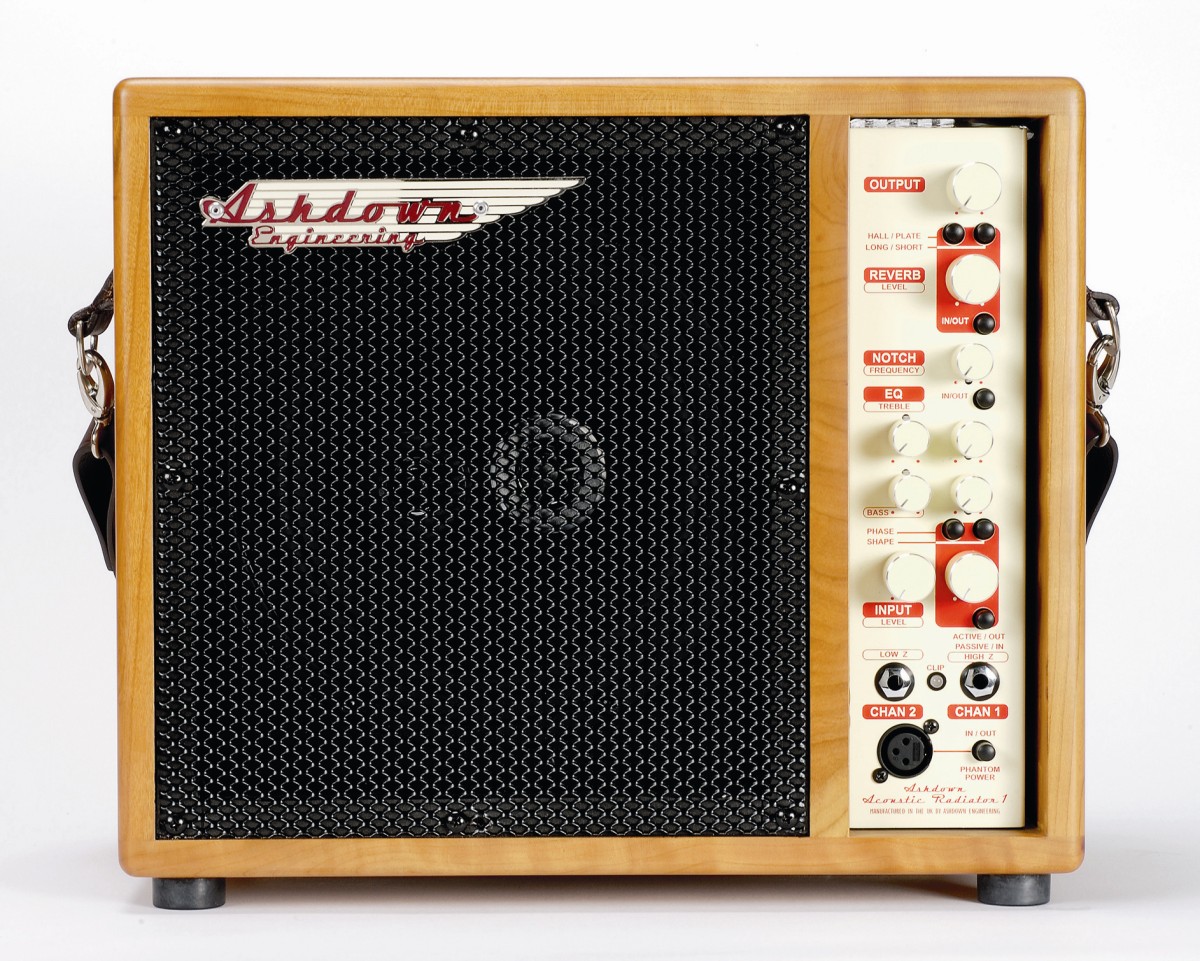MusicRadar Verdict
Additional onboard FX might broaden the AAR-1's appeal, but its virtues of giggable power, portability and quality sound are very attractive.
Pros
- +
Classy, good-looking amp. Keen price. Natural, pro-calibre sound.
Cons
- -
More effects and channel-assignable reverb would be useful.
MusicRadar's got your back
Like other brands such as AER and the old Trace Acoustic, Ashdown's Acoustic Radiator 1 amplifier combo (AAR-1 for short) packs its power into a compact, lightweight box. It's easily transportable by its detachable leather shoulder strap.
Of course, the closed-back, furniture-style enclosure needs care, and lacks the vinyl version's corner protectors, but an optional amp cover is available to help protect it from knocks. Behind a sturdy mesh-metal grille sits a 150W eight-inch speaker with dual concentric tweeters that are permanently in circuit.
Save for some of the knobs visually obscuring the various push-button facilities, the vertical control panel is easy to manipulate. The channels are arrayed from the bottom up: channel one - for your instrument - kicking off with volume and a gain switch for active or passive systems.
Above this are bass and treble (with 15dB of boost and cut), phase reverse and EQ shape switches, and a switchable notch filter sweeping 70Hz to 350Hz with a fixed amount of cut.
The mic channel, which handily provides phantom powering so that capacitor mics can be used without needing an outboard supply, provides low-impedance jack and XLR inputs and two-band EQ. Intended primarily for instrument or vocal mic'ing, this channel also proves satisfactory for running, say, accompaniment CDs.
However, since the amp's reverb isn't channel-assignable, playing accompaniment material dry (as you'd invariably want to) will mean that reverb can't separately be applied to the instrument channel without resorting to an external effect unit - either in-line between guitar and amp, or via the combo's rear-panel FX loop.
An LED clip indicator is a facility shared by both channels. Initially, it seems unduly sensitive to input gain levels, until you realise it's of the bicolour variety. As long as it's pulsing green you're okay; only if the LED turns red might you need to back off a bit.
The digital reverb's internal workings are upgraded from the original AAR-1's, but the controls, located directly under the master volume, are unchanged, as are the presets. Along with reverb level and an in/out switch, there are buttons to select a hall or a plate, and whether these modes have a short or long decay.
Nice and simple, although some prospective buyers might hanker after a few delays and a chorus or two.After all, these are effects which are commonplace even on budget acoustic amps these days.
Particular praise is merited for the fluid, well-damped smoothness of all the amp's controls. Yet we were puzzled by the absence of any power light: there isn't one on the front panel, and the mains switch on the rear panel isn't illuminated either.
The only visual indication of something happening is from the clip LED - by which time you know that the amp is up and running.
Sounds
Packing a suitable 100W-style punch, the AAR-1 has an impressively natural sound, delivered in an unforced manner.
Dual tweeters might imply an intrusive, easily overcooked high end, but the frequency gradient is seamlessly integrated - even when the mid-dip/bass-and-treble-boosting shape feature is activated, something that adds sparkle, not brittleness or harshness.
Coupled with a well-controlled mid-range, the bass end is handled elegantly too, endowing progressively creamy, almost valve-like warmth. All good stuff - and that goes for reverb quality as well.
Guitarist is the longest established UK guitar magazine, offering gear reviews, artist interviews, techniques lessons and loads more, in print, on tablet and on smartphones Digital: http://bit.ly/GuitaristiOS If you love guitars, you'll love Guitarist. Find us in print, on Newsstand for iPad, iPhone and other digital readers
“I have an original 909 – every time I try to use it I feel like I’m ruining it”: House hero Riva Starr on his studio essentials and his love of analogue synths
“A synthesizer that is both easy to use and fun to play whilst maintaining a decent degree of programming depth and flexibility”: PWM Mantis review
“I feel like that song had everything we needed to come back with”: Bring Me The Horizon’s Lee Malia on Shadow Moses, its riff and the secrets behind its tone, and why it was the right anthem at the right time











